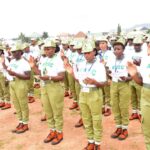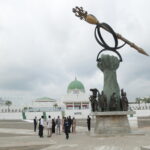In a world that is socioeconomically divided into the developed and the developing, and characterized by progressively widening inequalities between the rich and the poor, the gradual spread of the Coronavirus across the globe has altered the patterns of operations in virtually all walks of life. As at Wednesday 15th April 2020, the pandemic which the World Health Organization (WHO) code-named ‘COVID-19’ has infected 2,026, 823 persons in 210 countries resulting in 129,099 deaths.
Before the pandemic, the world had faced a learning crisis that continuously deepened the inequalities between the two sides of the divide as children of the poor only had access to poor education with potential for further impoverishment of its recipients. The ever-growing nature of the inequalities is easily perceivable in countries with fewer resources, weaker economies and more vulnerable education systems. The nexus between this COVID-19 and education may find some explanation in the fact that the level of the global learning crisis is often assessed through the number of in-school children (ISC) that are not learning as against the Out-of-School Children (OOSC).
It was estimated that 263 million children worldwide were out of school with Africa, Asia, Latin America and the Caribbean accounting for significant proportion of them whereas, Nigeria alone accounts for 13.7 million (or 5.21%) thereof which is the highest record globally. Yet, the educational implication of COVID-19 is far from being a preserve of poor countries where Nigeria belongs. Both the OOSC and the ISC are scattered across the globe and there is hardly a country without its own share thereof.
After all, countries in Europe and Northern America are not missing on the list of OOSC though they account for negligible percentage. This underscores some of the interconnected but unnoticed angles of both the OOSC and ISC to the global learning crisis that predated COVID-19.
UNESCO confirmed that the present scale of school shutdown is unprecedented in the modern world as 9 out of 10 school children are out of school worldwide. In fact, it was estimated that about 1.5
billion children have been affected by the learning disruption. It was only when Great Britain during World War II undertook a long-term, widespread school closure that such a disruption happened in a rich country. In fact, neither the Bubonic plague of the 14th-Century Europe which affected 25 million people nor the 1918 influenza which killed over 50 million people the world over caused such a widespread school-based disruption.
With reference to the school closures occasioned by Hurricane Katrina in the US, I like to demonstrate the implications of instructional time loss. Following the disaster in New Orleans, public schools were closed throughout the fall term of 2005. In order to mitigate the loss of instructional time, most of the students were enrolled in other schools elsewhere, within Baton Rouge and Houston.
In many cases, the schools where the students enrolled in were of higher quality than the previous schools. This was probably because the schools in New Orleans were extremely substandard before the disaster.
Yet, the high quality of schooling provided for the students did not immediately remedy the ‘learning disaster’ occasioned by the loss of instructional time. According to Douglas Harris, who was a member of the research team constituted to monitor students’ learning on their return for reenrollment at their schools after the post Hurricane Katrina reconstruction; it took the students two full academic years
to recover the learning lost.
The ultimate question is, if it took students two full years to recover lost learning in the United States of America, despite its relatively developed educational setting, how many years will it take students to recover in the Nigerian COVID-19 education milieu?
In the Nigerian context, it may be conjectured that, the school instructional time per academic year allotted by the Federal Government is 180 days which offers about 900 schooling hours. From experience, time remaining after occasional school closures as a result of terrorist attacks, teachers’ strikes, public holidays and other holidays), is no more than 150 days which is about 750 hours. Also, time remaining after teachers’ absenteeism, late arrivals and early departures, is not more than 120 days which is about 600 hours.
Furthermore, time remaining after students’ absenteeism, may not be more than 100 to 105 days which translates to about 500 to 525 hours per year. Further, time remaining as devoted to teaching and learning may just be about 90 days which is approximately 450 hours per academic session. Ultimately, what is left as actual class instructional time may be approximately 75 to 80 days which is just about 375 to 400 schooling hours, as most teachers exercise excessive liberty by teaching insensitively out of their instructional design.
In what follows, I engage with the colossal wastage involved in the instructional time loss occasioned by government education-based initiatives on COVID-19 in Nigeria.
Saheed Ahmad Rufai (Ph.D Curriculum & Pedagogy), immediate past Dean of Education, Sokoto State University, currently works on Development Education & Peculiarities-Based Curriculum-Pedagogy
 Join Daily Trust WhatsApp Community For Quick Access To News and Happenings Around You.
Join Daily Trust WhatsApp Community For Quick Access To News and Happenings Around You.


